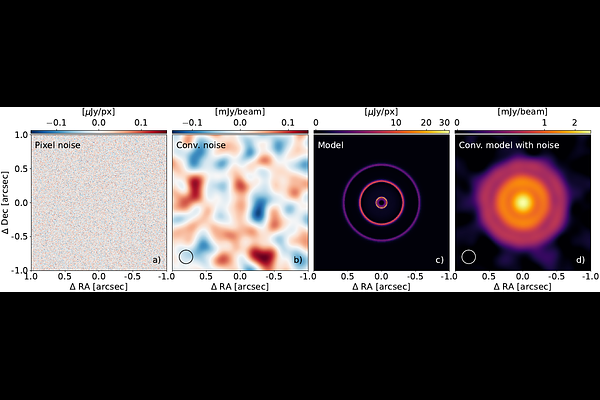The ALMA Survey of Gas Evolution of PROtoplanetary Disks (AGE-PRO): VI. Comparison of Dust Evolution Models to AGE-PRO Observations

The ALMA Survey of Gas Evolution of PROtoplanetary Disks (AGE-PRO): VI. Comparison of Dust Evolution Models to AGE-PRO Observations
Nicolas T. Kurtovic, Matias Gárate, Paola Pinilla, Ke Zhang, Giovanni P. Rosotti, Rossella Anania, Ilaria Pascucci, Benoît Tabone, Leon Trapman, Dingshan Deng, Miguel Vioque, John Carpenter, Lucas A. Cieza, Laura M. Pérez, Carolina Agurto-Gangas, Anibal Sierra, Dary A. Ruíz-Rodriguez, James Miley, Camilo González-Ruilova, Estephani Torres-Villanueva, Aleksandra Kuznetsova
AbstractThe potential for planet formation of a circumstellar disk depends on the dust and gas reservoirs, which evolve as a function of the disk age. The ALMA Large Program AGE-PRO has measured several disk properties across three star-forming regions of different ages, and in this study we compare the observational results to dust evolution simulations. Using DustPy for the dust evolution, and RADMC-3D for the radiative transfer, we ran a large grid of models spanning stellar masses of 0.25, 0.50, 0.75, and 1.0 $M_\odot$, with different initial conditions, including: disk sizes, disk gas masses, and dust-to-gas ratio, and viscosity. Our models are performed assuming smooth, weakly, or strongly substructured disks, aiming to investigate if any observational trend can favor or exclude the presence of dust traps. The observed gas masses in the disks of the AGE-PRO sample are not reproducible with our models, which only consider viscous evolution with constant $\alpha$, suggesting that additional physical mechanisms play a role in the evolution of the gas mass of disks. When comparing the dust continuum emission fluxes and sizes at 1.3 mm, we find that most of the disks in the AGE-PRO sample are consistent with simulations that have either weak or strong dust traps. The evolution of spectral index in the AGE-PRO sample is also suggestive of an unresolved population of dust traps. Future observations at high angular resolution are still needed to test several hypotheses that result from comparing the observations to our simulations, including that more massive disks in gas mass have the potential to form dust traps at larger disk radii.